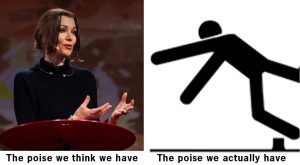We’ve been planning a series of webinars to allow busy or remote workers and managers to access our current strategies on how to work better with migrants and refugees.
On the 15th of August we ran the first sold-out webinar in the series, ‘5 steps to effective spoken communication’
We chose spoken communication to start the series because we think there’s a real gap in accessible frameworks that workers can follow to improve their spoken communication. There seem to be many resources about written communication, perhaps because it’s less complex than spoken communication, which involves far more factors that can impact effectiveness.
While refining our workshops we combined cultural competence and health literacy techniques to develop 5 practical steps workers can take to improve spoken communication. We think these evidence-based steps can help workers increase the safety and accuracy of communication.
- Find out client’s view and existing knowledge
Culture and personal beliefs influence how people see the situation and how they want to access services and make decisions. Finding out a client’s view will help you communicate at an appropriate level, address client concerns and negotiate between their beliefs and yours.
- Enable question asking and note taking
Many clients don’t feel comfortable asking questions during consultations. And even if they do, evidence suggests that 40-80 percent of spoken health communication is forgotten immediately. Setting an expectation of question asking and checking how the client thinks they’ll remember the information can help. Often, it’s as simple as saying ‘here’s a pen & paper in case you want to write anything down’.
- Limit what you say
Limiting what you say means less for your client to process. Focus only on the key points you want your client to take away. And remember if you haven’t checked what they actually want to know, they’re less likely to be interested in what you have to say.
- Plain language and simple graphics
Plain language means communicating in a way that is easy to take in, understand and use to make decisions. It is free from jargon and breaks down complex language into simpler language that conveys the same message. Using simple, appropriate graphics is also shown to improve understanding.
- Check Understanding
If you don’t hear your client explain what you have told them in a way that makes sense, you can’t know what they’ve taken from your discussion. Common ways of checking understanding like asking ‘do you understand?’ or ‘does that make sense?’ aren’t effective. Instead use a technique like teach-back or a question like ‘what will you tell your partner about what we discussed?
Do you want to improve the quality of spoken communication at your organisation?
Our health literacy and cultural competence training can help! Find out more…
- Call Siri on 9418 9912
- Check out our Cultural Competence and Health Literacy online training.

